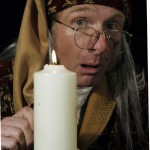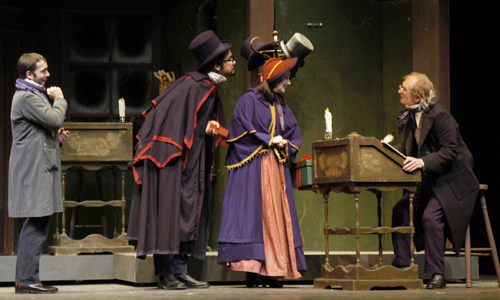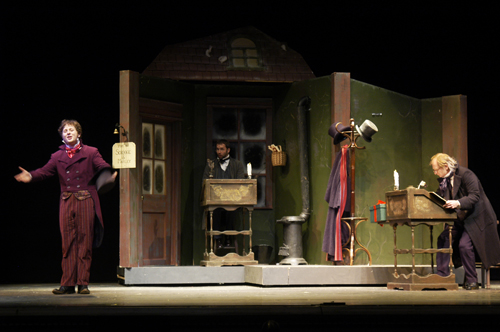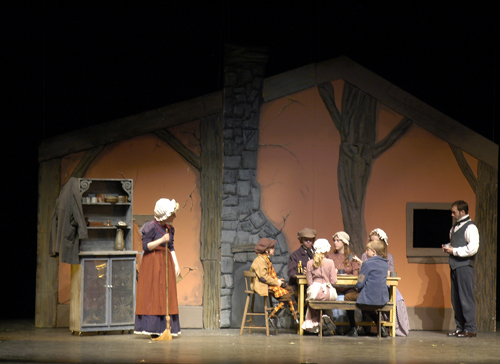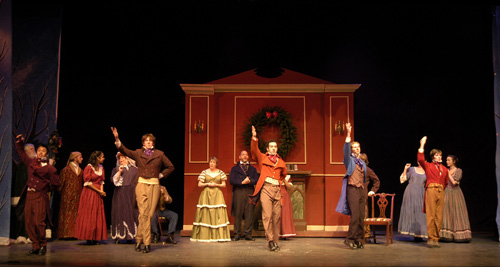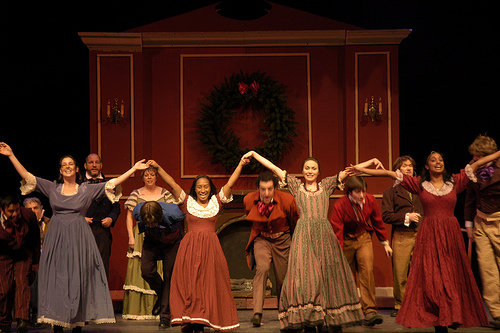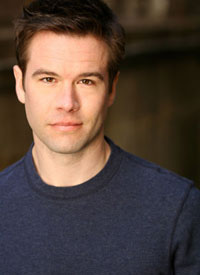
Q: What special challenges does portraying a character not of this world present, such as the role of Ghost of Christmas Past?
A: There are many great opportunities and challenges when approaching the development of a non-human character. Specifically, when delving into a role such as the Ghost of Christmas Past, you get to answer questions that help to inform the choices you make on stage while not bluntly addressing them. Was Christmas Past a human first that was given a task, or a being created only for that purpose? How long has he been appearing to people? How often is he successful in helping people to change their lives and embrace the Christmas spirit? Does he think Scrooge will change?
Approaching the character also gives a new sense of freedom. Since it is a non-human, it allows the actor to add a layer of unpredictability to the portrayal. Where a person may react one way to a situation, a Ghost has the privilege of seeing the bigger picture and reacting in a different way.
I think the most important thing to remember in approaching this character is purpose. What is the primary function of Christmas Past? In this play, he is there to show Scrooge the choices he has made in the past in hopes of motivating him to make better choices in the future. Everything Christmas Past does should find some level of motivation in that statement.

